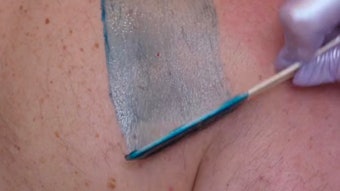
Sugaring is being touted by experts as a simpler, less painful way to remove unwanted body hair. It is the act of pulling hair out of the roots using a paste made from sugar, lemon and hot water. So, is sugaring a safer alternative to waxing for a client with a history of cancer or who is undergoing active cancer treatment? It can be, depending on a few factors.
Sugaring vs. Waxing for Cancer Clients
We are not suggesting giving up waxing for sugaring, but know that you can also consider a softer alternative to waxing if you offer hair removal services to clients living with cancer and you want to avoid causing harm to compromised skin.
Irritation. Wax adheres to both the skin and the hair, and it can therefore remove skin during the hair removal process to increase the risk for infection. This is a scary situation when a professional is not aware of the integrity of the skin resulting from chemotherapy. Sugaring binds to hair rather than sticking to skin. This makes sugaring especially good if the client has sensitive skin, as it causes less irritation and isn’t as painful as waxing.
Heat. Heat is required to keep wax at a consistency needed to work effectively. Hot wax can burn sensitive skin. Heat is contraindicated for conditions like lymphedema (especially undiagnosed lymphedema), whereas sugaring does not use heat.
Sending Them Away
Turning the client away leaves the professional at a loss for business, the client humiliated at being refused a service and the client with no choice but to find another professional to provide the services or to possibly do the service at home. The latter could be awkward, and a person with no experience can potentially cause themselves more harm. So, there is always a fine line to walk when handling a tricky situation.
Identify Current Cancer Treatments
What treatment has the client had previously or what treatment is the client currently undergoing? Traditional treatment can include surgery, chemotherapy, other drug therapies such as targeted therapy or immunotherapy drugs and radiation therapy. Knowing which treatment is being administered is important, as side effects are dependent on the treatment and how the client responds to the treatment.











